Put
pollen from a grass and a daisy under a microscope and the differences
jump out at you. The grass pollen will be small, angular, and textured; the daisy
pollen will be large, round, and relatively smooth.
Generalizing,
grass pollen is typical of plants that disperse their pollen
on a breeze. It is light and has a surface meant to catch the
air and fly. Daisy pollen is typical of plants that use insects
to disperse their pollen. Their pollen is heavy, often sticky,
and - relatively speaking - drops like a stone if shaken loose
from the flowers. If you keep a vase of daisies in your home,
look for the pollen to settle on the table below.
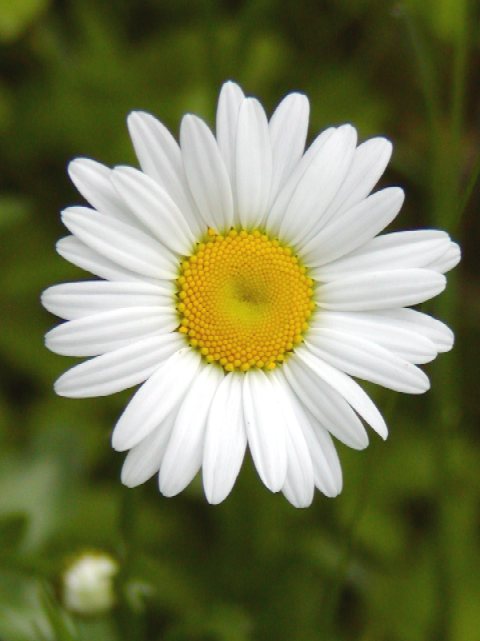
Daisy
|
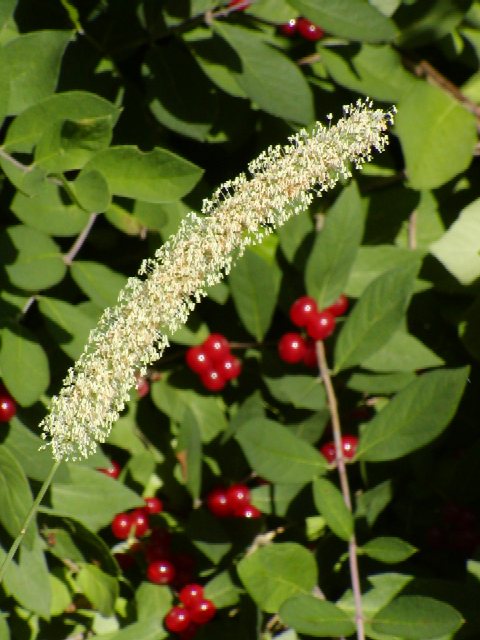
Grass
|
To
determine if a plant uses wind or insects as its pollination
strategy, you don't have to look at the pollen, just look at
the flowers. Typically, wind pollinated plants have inconspicuous
green or brown flowers while insect pollinated plants include
all the showy varieties we so enjoy.
Goldenrod,
one of the true beauties of summer, suffers from the bad rap
of being thought to be the source of allergies. A glance at
the showy flowers ought to be enough to dispell the myth, but
it persists. The true culprit is ragweed, a green-flowered plant
that blooms at roughly the same time - and disperses its pollen
on the wind.
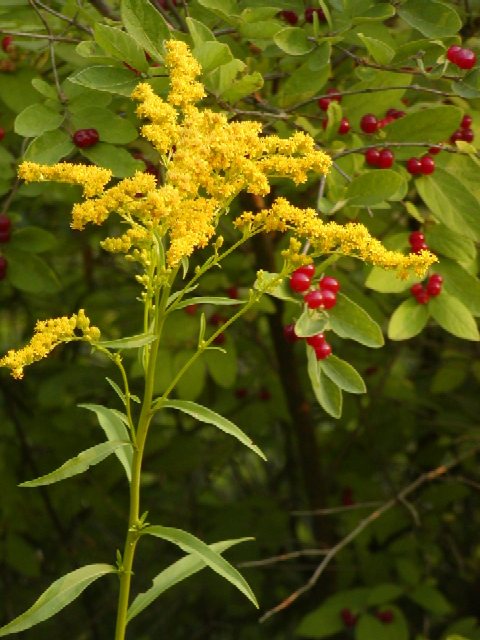
Goldenrod
|
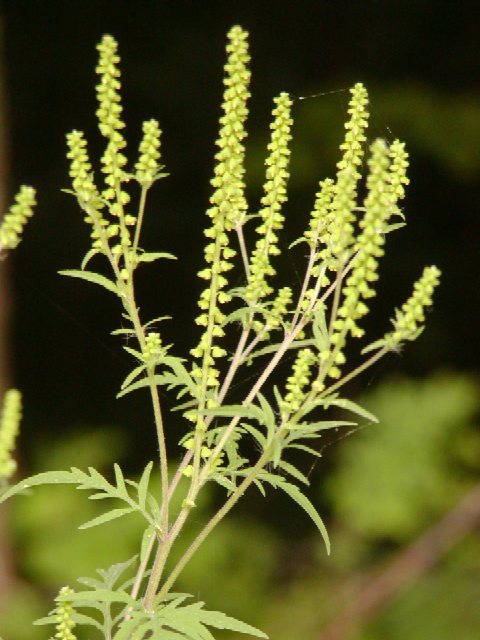
Ragweed
|
Plants
and insects have struck a bargain through co-evolution. Plants
produce nectar as a reward for pollination services. Insects
receive the nectar, and sometimes a share of the pollen itself
- as in the case of bees and beetles. Flowers typically produce
far more pollen than is necessary for fertilization so they
can afford to share.
Among
the insect pollinated plants, we can use flower anatomy to make
good guesses about the type of insect relied upon. While the
rules are not perfect, they're right more often than not.
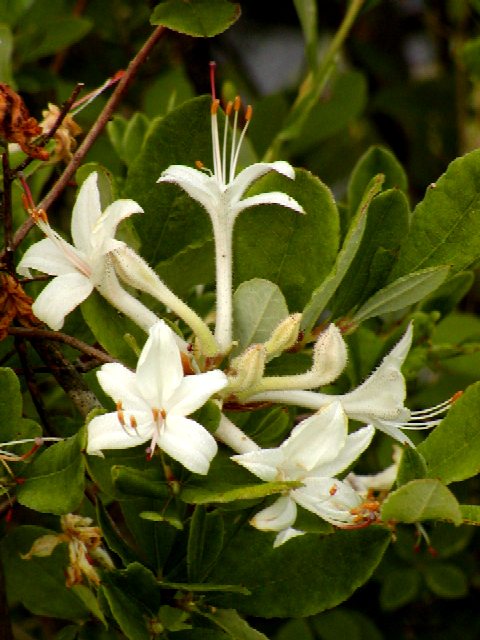
Azalea |
White
flowers, especially those like azalea or bindweed with deep
pockets, slender tubes, or "spurs" holding nectar,
are often moth pollinated. The white color improves night
visibility and the pockets require a moth's long proboscis
to reach the nectar - at the same time assuring that the
moth's head and body are liberally sprinkled with pollen. |
Similarly,
brightly colored (often non-white) flowers with long spurs such
as touch-me-not (jewel weed) may be pollinated by day-flying
butterflies - again because it takes a butterfly's proboscis
to reach the nectar. But some insects, notably beetles and bees,
will cheat by chewing a hole in the side of the flower, bypassing
the stamens and pistil - the plants reproductive organs - and
getting directly to the sweets. Of course butterflies can exploit
all sorts of flowers, not just those with deep reservoirs of
nectar. They do just fine on daisies where the pollen is essentially
laid out on a plate: the composite cluster of yellow disk flowers.
Beardtongue
- and other members of the Scrophulariaceae and Labiatae (Mint)
families, among others - have cylindrical flowers designed to
allow pollinators to enter, being "doinked" with the
pollen in the process. Here the typical pollinator might be
a bumble bee.
Beardtongue
| Milkweed
has a similar strategy. Its pollen is massed in structures
called pollinia. When a butterfly steps on a flower, a pollinium
is attached - literally glued to a foot or tongue - only
to be released when the butterfly steps on another flower
and the pollinium sticks to the pistil. |
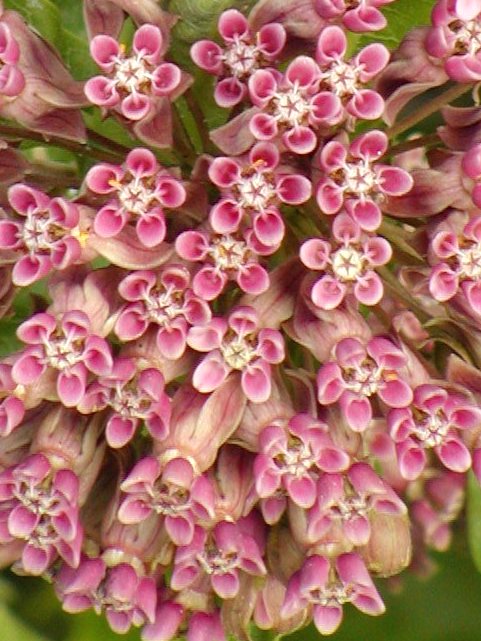
Milkweed |
Mountain
laurel varies the theme once again. The tips of its stamens
are captured under tension in pockets of the petals - traps
ready to be sprung. When an insect lands on the flower, the
petals are bent enough to release the stamens - and the pollen
masses are slammed into the insect's body.
Dark
red flowers often have a nasty odor. The point is to mimic carrion
and attract flies as pollinators.
Of
course insects and wind are not the only pollination mechanisms.
Birds (e.g., hummingbirds) and bats have roles to play.
The
next time you take a walk on the trail, try looking differently
at the flowers you pass. How are they shaped? Can you find the
pollen? Can you identify structures designed to hold nectar?
Can you observe pollinators at work?
|